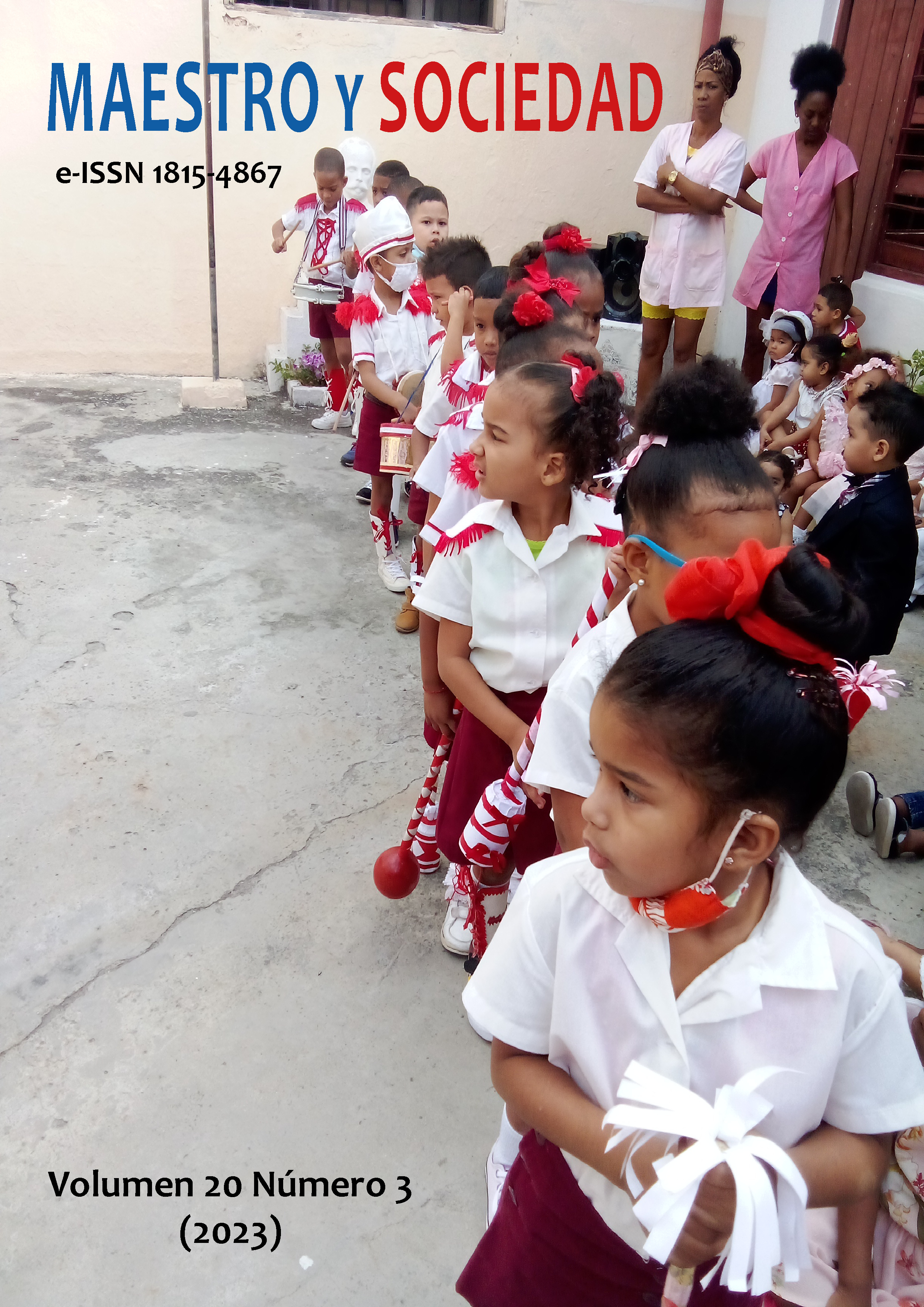Alternative experimental activities of eighth grade Chemistry with a creative and innovative approach
Alternative experimental activities of eighth grade Chemistry with a creative and innovative approach
Keywords:
teaching of Chemistry, experimental activities, basic secondary, creative and innovative approachAbstract
Introduction: The present work aims to socialize the results of the use of alternative experimental activities in the subject, with a creative and innovative approach. Materials and methods: However, the application of theoretical and empirical research methods show that there are still difficulties regarding the role of the student in the development of these activities, their creative, problematizing and contextualized nature. Results: The experiment constitutes the main way that Chemistry teaching has, so that students become directly familiar with the phenomena and processes related to substances, their properties and applications. Discussion: In the Chemistry program, for the Cuban secondary school, the realization of experimental activities directed to that purpose is included. Conclusions: Creativity can be developed through the design and implementation of alternative and complementary experimental activities, to those already conceived in the course program, as demonstrated by the innovative proposal carried out and successfully implemented by the authors of this work.
References
Armada, L., Arteaga, E. y del Sol, J. L. (2016). El desarrollo de la creatividad en la enseñanza de la matemática. El reto de la educación matemática en el siglo XXI. Conrado, Volumen 12, No. 54, pp. 84 -92. http://conrado.ucf.edu.cu/index.php/conrado/article/view/371
Colectivo de autores de la dirección nacional de secundaria básica y el Instituto Central de Ciencias Pedagógicas (2007). Modelo de secundaria básica.
Elisondo, R. M. (2018). Creatividad y educación: llegar con una
buena idea. Creatividad y Sociedad. Vol 27, pp. 145-166. https://creatividadysociedad.com/articulos/27/6.Creatividadyeducacion_llegarconunabuenaidea.pdf
Gestal, M. y Ruão, T. (2021). La transversalidad invisible de la creatividad. Revista ICONO 14. Revista Científica De Comunicación y Tecnologías Emergentes, 19(2), pp. 1-10. https://doi.org/10.7195/ri14.v19i2.1757
Mitjans, A. (1994). Pensar y crear. Estrategias, métodos y programas. La Habana: Academia.
Ordaz, G. J. y Britt, M. (2018). Los caminos hacia una enseñanza no tradicional de la química. Actualidades investigativas en educación. Volumen 18, No. 2 https://doi.org/10.15517/aie.v18i2.33164
Polanco I. E., Martínez, A. y López J. (2019). La dirección del experimento químico docente habilidad necesaria en la formación profesional pedagógica de química. Revista Atlante: Cuadernos de Educación y Desarrollo. https://www.eumed.net/rev/atlante/2019/02/experimento-quimico-docente.html//hdl.handle.net/20.500.11763/atlante1902experimento-quimico-docente
Quispe-Tarco, O. G. (2021). La comprensión lectora y creatividad en estudiantes de edad escolar. Maestro y Sociedad (Número Especial) pp. 96-107. https://maestroysociedad.uo.edu.cu/index.php/MyS/article/view/5449/5151
Sánchez, W., Pérez, A. y Remedios, J. M. (2022). El aprendizaje creativo: una alternativa para el proceso de enseñanza y aprendizaje de la Matemática. Pedagogía y Sociedad, 25 (63), pp. 290-309. http://revistas.uniss.edu.cu/index.php/pedagogia-y-sociedad/article/view/1278
Suárez, N., Delgado, K., Pérez I. y Barba M. (2019). Desarrollo de la Creatividad y el Talento desde las Primeras Edades. Componentes Curriculares de un Programa de Maestría en Educación. Formación universitaria, 12(6), pp. 115-126. https://dx.doi.org/10.4067/S0718-50062019000600115
Valero, J. A. (2019). La creatividad en el contexto educativo: adiestrando capacidades. Tecnología, Ciencia y Educación, Volumen 13, mayo – agosto, pp. 150 -171. https://dialnet.unirioja.es/descarga/articulo/6936270.pdf
Vygotsky, L. (1987). Creación e imaginación en la edad infantil. La Habana: Pueblo y Educación.
Downloads
Published
How to Cite
Issue
Section
License
Copyright (c) 2023 Milagros Domitila Torres Cruz, José Antonio Prendes Sans, Milagros Rodríguez León

This work is licensed under a Creative Commons Attribution-NonCommercial-NoDerivatives 4.0 International License.
This journal provides immediate open access to its content, based on the principle that offering the public free access to research helps a greater global exchange of knowledge. Each author is responsible for the content of each of their articles.



























 Universidad de Oriente
Universidad de Oriente 